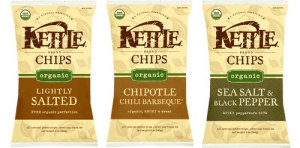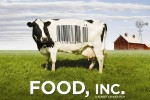Since there aren’t any labels to designate genetically modified products, consumers need to be cognizant about checking the ingredients and labels for red flags. Similar to the “greenwashing” phenomenon, filtering through the marketing maze that is the grocery store has been a difficult task for the past few decades. It is nearly impossible to avoid GMOs altogether… But what can you do to try? Here are a few guidelines:
Buy food labeled 100% organic. Eating organic can be a challenge. It’s more expensive and definitely does take more effort, which I won’t deny. I will tell you, that it can make a difference on your overall health in the long run, and I personally think that organic food generally tastes better. You do need to be careful though. Manufacturers are aware of the impact that using an “organic” label will have on their market positioning and subsequent sales, and they are not afraid to take advantage of it. “Organic” labeled products still may contain up to 30% GMOs, so be sure to go for the “100% Organic,” as the US government does not allow manufacturers to use that label if that food contains GMOs or have been fed GMOs. This also applies to eggs. Eggs labeled “free-range,” “natural,” and “cage-free” are all better than conventional eggs, but again, there is no guarantee that they don’t contain GMOs. Go for the 100% organic.
Check produce label numbers. 4-digit numbers mean the produce is conventionally produced. 5-digit numbers beginning with an 8 designate genetic modification. If a fruit or vegetable is labeled with an organic sticker, if most likely is, but to be sure, their PLU will be a 5-digit number beginning with a 9. So to break it down…
#### – conventional
8#### – GMO
9#### – Organic
Only purchase 100% grass-fed beef. Most cows are fed GMO-corn at some point, for either their whole lives or pre-slaughter, as the corn increases intramuscular fat and marbling. Look for beef labeled either “100% grass-fed” or “pasture-fed.” The same applies to lamb and veal. For pork and chicken, look for the “100% organic” label.
Buy whole foods. No, not the grocery store, although they offer some of the best products available if you’ve got the “whole paycheck” to spend. Try to buy as much fresh food that you can cook yourself, as opposed to anything that comes in a box or bag. Take the extra 20 minutes to make real mashed potatoes instead of the ones in the box. Your food will not only taste better, but you will also start to look better and feel better.
Shop Local. Most all genetically modified food comes from large industrial farms. You may be surprised to learn that many towns have weekly farmers markets, and if they don’t, than a town nearby certainly will. Farmers markets are a great place to find fresh, reasonably priced, locally-grown food.
Grow your own produce. It sounds crazy when you first think about it, I know, but it is a lot easier than you probably think. Not only does it guarantee that you are getting fresh, organic produce, but it also saves you money and can bring a little life to your backyard.
GMO foods have invaded our food supply to the point of being almost unavoidable. In that respect, it sometimes seems pointless to try to avoid it. However, every little step and effort does make a difference in the long run, and making an effort to eat organically grown, non-processed foods really is an investment in your long-term health. Click here for a list of brands that don’t use GMOs, some of which you are probably familiar with. Make an effort to support these companies the next time you’re at the grocery store.
Here are a few of my picks for great GMO-free products that are just as convenient and readily-available as any other GMO alternatives, not to mention way better for you.
 Kettle Brand Chips: these are my favorite potato chips! You can buy their organic chips or not, but either way, they are GMO free. They also have flavored tortilla chips that actually taste just like Doritos.
Kettle Brand Chips: these are my favorite potato chips! You can buy their organic chips or not, but either way, they are GMO free. They also have flavored tortilla chips that actually taste just like Doritos.

Annie’s: the cheddar bunnies and snack mix bunnies are sooo good! Lots of cheese-dust goodness without the GMOs. They also have a boxed mac and cheese that beats Kraft any day of the week.
 Clif Bars: these bars have been around forever, and I wasn’t a huge fan of them, but they recently came out with the “Builder’s Bar” line that is more like a regular protein bar. My favorite flavor is the chocolate, but they also have them in peanut butter and chocolate mint.
Clif Bars: these bars have been around forever, and I wasn’t a huge fan of them, but they recently came out with the “Builder’s Bar” line that is more like a regular protein bar. My favorite flavor is the chocolate, but they also have them in peanut butter and chocolate mint.
 G.T. Daves Kombucha: Organic Raw Kombucha is a great (albeit pricey, as they run around $3.50/bottle) alternative to calorie-filled Starbucks drinks and sodas. It helped me kick my aspartame-filled Diet Coke habit. Praised as a “detox in a bottle,” Kombucha comes in a ton of flavors. My favorites are the citrus and the grape. Also, since they recently redid the formula, you don’t need to worry about accidentally setting off your ankle bracelet
G.T. Daves Kombucha: Organic Raw Kombucha is a great (albeit pricey, as they run around $3.50/bottle) alternative to calorie-filled Starbucks drinks and sodas. It helped me kick my aspartame-filled Diet Coke habit. Praised as a “detox in a bottle,” Kombucha comes in a ton of flavors. My favorites are the citrus and the grape. Also, since they recently redid the formula, you don’t need to worry about accidentally setting off your ankle bracelet

















